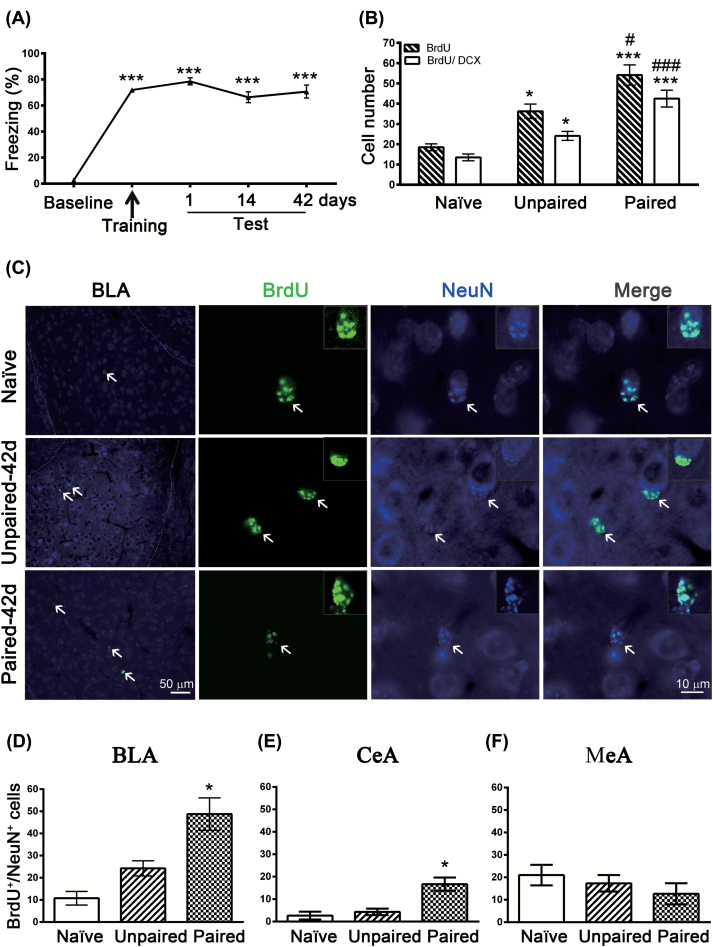Figure 1.
Fear conditioning induces amygdalar neurogenesis. (A) Mice were given 15 tone-shock pairings and were tested for retention of conditioned fear at 1, 14, and 42 days after training, using freezing behavior during tone presentation as a measure of the strength of cue-dependent memory. **p < 0.001 vs. baseline (n = 22 mice/group). (B) Mice were intraperitoneally injected with 5-bromo-2’-deoxyuridine (BrdU; 300mg/kg) 2h before fear conditioning and BrdU+ and BrdU+/doublecortin+ cells were analyzed 14 days after training. *p < 0.05, **p < 0.001 vs. naïve (n = 6–8 mice/group); #p < 0.05, ##p < 0.001 vs. unpaired (n = 8 mice/group). (C) Mice were intraperitoneally injected with BrdU (300mg/kg) 2h before fear conditioning and BrdU+/Neuronal nuclei (NeuN)+ cells were analyzed 42 days after training. (D) Quantification of BrdU+/NeuN+ cells in the basolateral amygdala (BLA). *p < 0.05 vs. unpaired (n = 4 mice/group). (E) Quantification of BrdU+/NeuN+ cells in the central amygdala nuclei (CeA). *p < 0.05 vs. unpaired (n = 3 mice/group). (F) Quantification of BrdU+/NeuN+ cells in the medial amygdala nuclei (MeA). (n = 3 mice/group).

